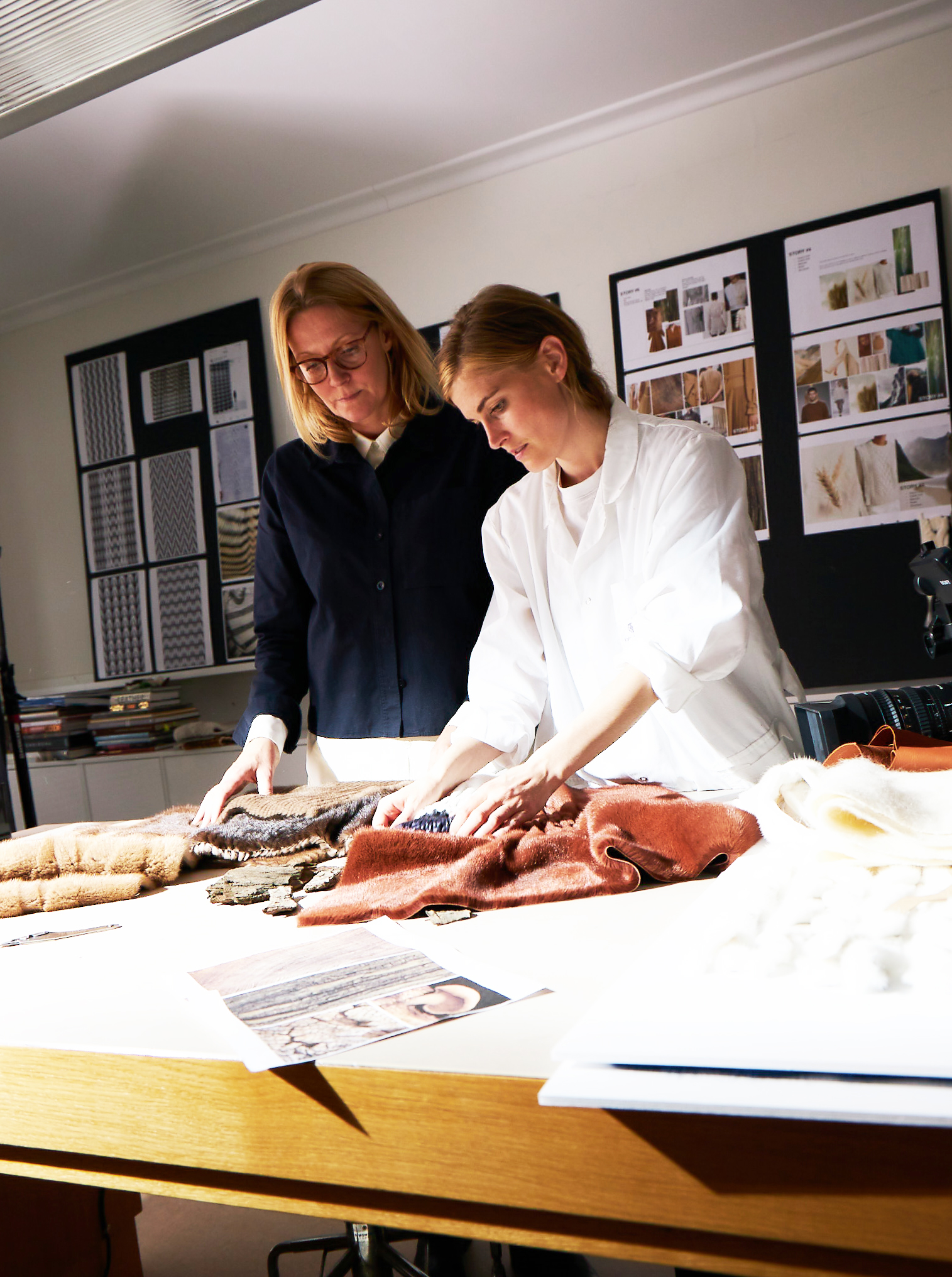Q & A with Kopenhagen Fur Development’s External Designer, Mia Lisa Spon
Kopenhagen Fur Studio, Kopenhagen Fur’s creative hub located in the middle of Copenhagen, has just launched a new initiative to support the fashion industry with inspiring fur techniques and silhouettes – Kopenhagen Fur Development vol.1.

Kopenhagen Fur Development Vol. 1 has been developed as a collaboration between Kopenhagen Fur’s highly skilled furriers and Mia Lisa Spon, who is external designer. Mia has great expertise from her own fashion brand, Spon Diogo, but also from various prestigious design functions in international fashion brands and studios.
Below an interview with Mia on fur, craft and the thoughts behind Kopenhagen Fur Development vol.1.
When did you first come across the furrier craft?
- When I started my first label many years ago, I was lucky to have a tour in Kopenhagen Fur Studio, and I was immediately stunned by the material and all the creative techniques. As a fashion designer with a background in tailoring, I have always had a great interest in the old noble crafts in clothing. I am deeply impressed by the work of the furriers and I especially admire the great respect for the material and how to consider every inch of the material as valuable and how they don’t let anything go to waste. I think the clothing business could learn something from this.
What are the attributes that makes fur special when compared to other materials?
- Besides the obvious beauty and comfort of the material, I appreciate the longevity. In my work, I have always strived to create long lasting items, both in terms of design and durability. More than ever, we need to consider the relevance and durability of the products we design. Fur is known to be passed on through generations.
What was the inspiration and theme for Kopenhagen Fur Development, vol.1?
- The overall seasonal theme is ‘Scandinavian Nature’. Nature itself creates fantastic materials, which we have always valued very highly in Scandinavian design. We see this, for example, in furniture design, where natural materials are emphasized in their pure form and where the respect for the material and its durability are the focus.
When I see and touch the beautiful fur the furriers present to me, it is with an intuitive respect for what nature has given us and I feel humble to be allowed to create in this fine material. It came naturally to me that we created a story that connects the raw nature, the Scandinavian design tradition, as well as the rethinking of fashion, where we elevate the long-lasting materials and the good craftsmanship.
What was your approach to translating nature details into fashion design?
- Fur is a very versatile material; lots of texture, movement, colour play and flexibility. In addition, we have all the creative manipulations and techniques developed by the furriers. Nature also has endless variations of beautiful, raw, barren, lush, matte, glossy, rough and smooth surfaces which are deeply inspiring to look into.
In this project, the furriers and I have tried to directly replicate natures wild patterns and structures into new fur techniques. At the same time, we have kept a strong focus to incorporate the techniques into clothing design and to have a modern and timeless look at the same time.
What was the process like, when working together with the furriers?
- It has been great fun and a lot of ping-pong’ing. There is a certain insider way of looking at fur between the furriers. I probably see things in a totally different way, during the process. I hope the collaboration has been just as inspiring and fruitful for them, as it has for me.
What was the idea behind the three styles?
- For the design process of the three styles we had agreed some dogmas in advance. We wanted the clothes to be both super modern and at the same time durable and timeless in style. We also wanted to give the garments flexibility in the form of multi-functionality and versatile expression, and that the clothing can be worn in several ways.
The collection counts;
- an anorak consisting of an outer and an inner jacket with detachable hood that can be buttoned up / in for different silhouettes.
- a mink trench coat that is coated so it is reversible with a distinctive look from both sides. Like a 2-in-1 coat, you might say.
- a 'wrap coat' with integrated scarf that can be worn in three different ways.
(To see the three styles please click here and to see the style patterns please click here)
How do you see fur on a bigger scale?
I sincerely hope that the future fashion consumerism will change to a ‘buy less, but better’ mentality. I hope that we will learn to appreciate good craftsmanship and pay respect to materials in the way, we did in the old days. I imagine that fur will have a renaissance of the practical, durable, yet very chic garment, that you want to preserve and pass on. I hope that the clothing business will develop in same direction: focusing on better materials and good tailor crafts.
